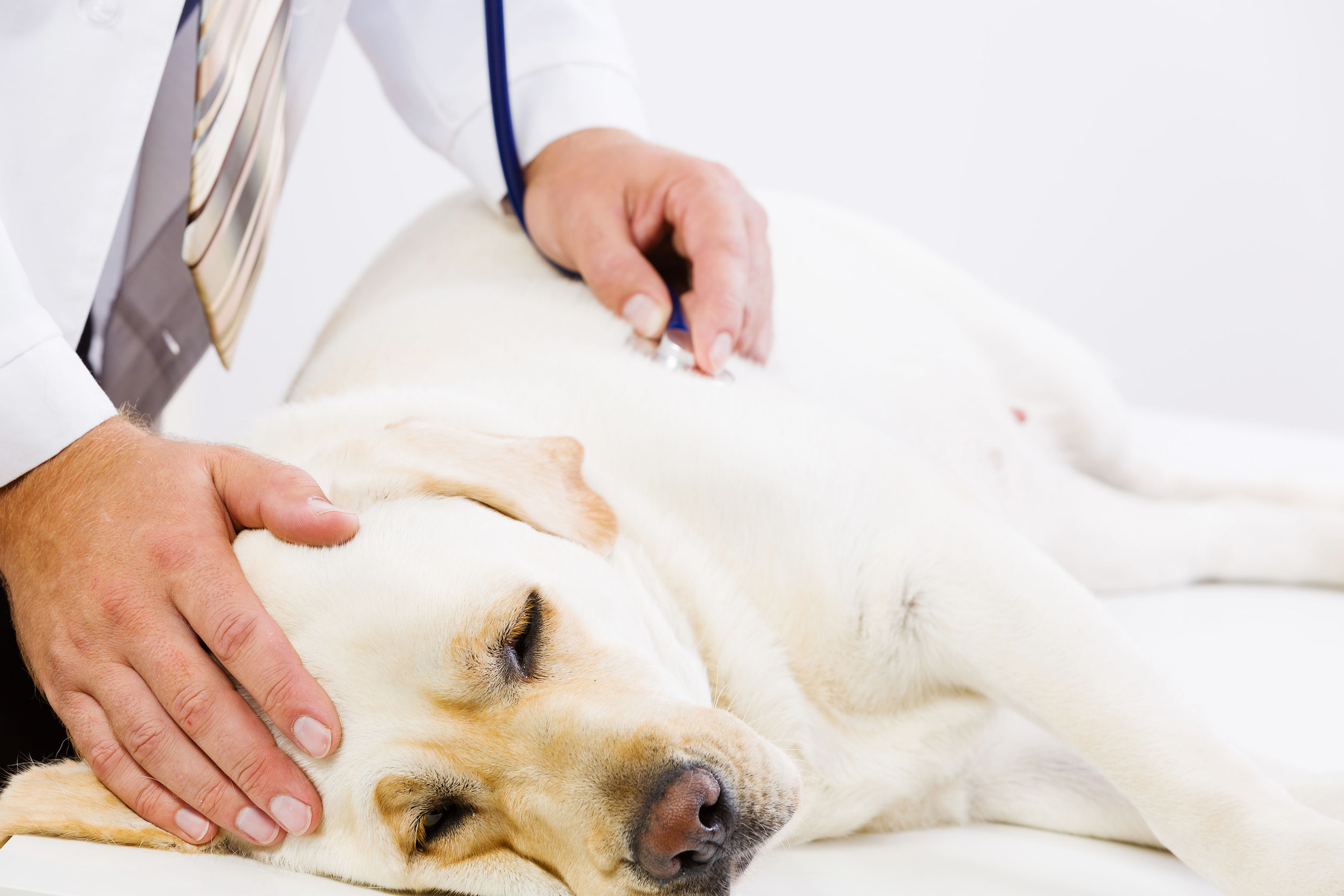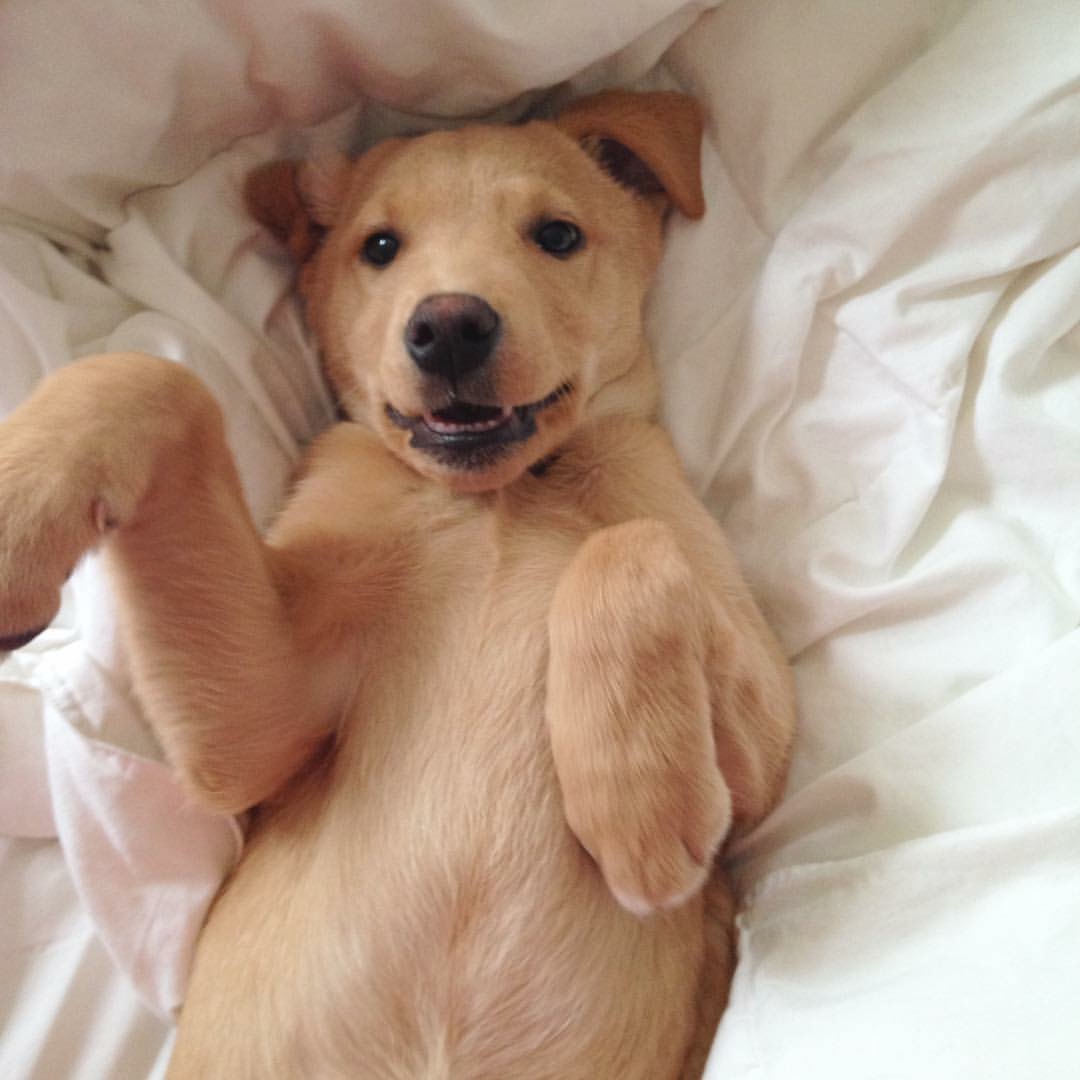By David Erlewein, DVM
Gastric dilatation/volvulus syndrome (GDV) is the five-dollar term for what we commonly refer to as “bloat,’ “flipped stomach,’ “twisted stomach’ or “stomach torsion.’ Bloat is an extremely dangerous condition, is always considered life-threatening, and prompt treatment is essential. There are absolutely no effective home remedies and dogs can die from bloat within a few hours. Even with treatment, as many as 20-30% of the victims may die.
The GDV syndrome begins with an accumulation of food and gas in the stomach that causes the stomach to swell (dilatation) to the point where the gas cannot escape either by belching or passing through the intestines. The swelling stomach resembles a gas-filled balloon and puts pressure on the abdomen making breathing more difficult and tends to compress many of the veins in the abdomen reducing the rate of blood return to the heart. The stretching of the stomach wall can severely narrow or tear the blood vessels in the lining and muscle layers of the stomach causing disruption of the blood supply to these tissues and ultimately their death and/or rupture.
The swollen gas-filled stomach can easily twist or rotate on itself (volvulus) and this pinches or closes off the blood supply to the entire stomach resulting in a very rapid deterioration of the dogs condition. Not all dogs with a gas-buildup and dilatation develop volvulus but nearly all dogs with volvulus passed through the stage of dilatation.
The volvulus can also involve the spleen, restricting or cutting off the blood supply to part or all of this organ and sometimes the pancreas is also involved. The combined effects of reduced blood flow to the heart, reduced blood and oxygen to the involved tissues, and the toxic effects of dying tissue lead to profound shock and death.
GDV is one very nasty condition. I think understanding the condition, being able to recognize the early signs, knowing the predisposing factors and following good preventative practices are imperative for all owners of large breed dogs.
So what kind of dogs get GDV? We know there is a definite link between GDV risk and body type. Large breeds with deep narrow chests are the most common victims. The condition is very rare in the small breeds. Our hunting buddies, Weimaraners, Irish setters, German shorthaired pointers, Chessies, Labs and goldens are in the list of the most commonly affected breeds. Great Danes and Saint Bernards top the list but Weimaraners and Irish setters are close behind.
The earliest signs of GDV tend to be restlessness, stretching of the abdomen, rapid shallow breathing and attempts to belch or vomit that are non-productive. Owners often describe this as “dry heaves’. Often there is profuse salivation with long strings of thick saliva hanging from the lips at the corner of the mouth. The dogs belly is by now visually swollen and both hard and sensitive to the touch. The dog may groan when touched and breathing is progressively more difficult. The progression and intensification of these signs lead to profound shock and collapse.
Treatment of GDV is always an in-hospital procedure and involves three distinct phases: decompression, stabilization of the patient and surgical correction. Decompression (release of the gas) may involve passage of a stomach tube and/or puncture of the stomach from the outside with a needle or special tube. Stabilization procedures will vary with the degree of shock and depression of the patient but usually involve drugs to combat shock, fluids, pain control and antibiotics. When the patient is stable, surgery is done to correct the position of the stomach and suture the stomach to the body wall to prevent future episodes. This is called a “gastropexy’. If the gastropexy is not performed, most of these dogs will develop GDV again.
- There are several steps owners of dogs at risk for GDV can take to lower the risk
- Feed 2 or 3 times daily rather than a single large meal
- Limit water intake immediately after eating
- Avoid vigorous exercise for 2 hours after meals
- Feed susceptible dogs individually in a quiet location to reduce rapid, competitive eating
- Some surgeons are recommending preventative gastropexy at the time of neutering in breeds at high risk for GDV or offspring of dogs with GDV. This is not yet universally accepted.
While all the factors that predispose dogs to GDV are not yet known, we do understand some of the factors that increase the risk for bloat. We’ve already mentioned the breed risk factor and within the breeds there is a familial risk. Dogs whose close relatives have developed GDV are at increased risk and the incidence appears to be related to chest conformation with individuals with a narrow deep chest at greater risk.
Other factors involved with GDV risk include age, sex and temperament. Dogs over 7 years of age are twice as likely to develop bloat as younger dogs, males are twice as likely as females and dogs that are anxious, fearful or nervous are more likely to develop GDV. Neutering does not seem to effect the incidence of bloat.
Dogs fed one large meal a day are more than twice as likely to develop bloat than those fed two or three times daily. Dogs that eat more rapidly or gulp their food may be at increased risk. Vigorous exercise soon after eating may also increase the risk.
Some studies have indicated that feeding dogs with elevated feeders, moistening food containing citric acid and feeding foods that list oils in the first four ingredients may increase the risk for GDV but there is no universal agreement on the effect of these practices.
Gastric dilatation/volvulus is an all too common catastrophic illness of our canine companions. While not all cases are preventable, utilizing the above practices will prevent some cases and recognizing the early signs of the disease will hopefully get more dogs into treatment before it is too late.








